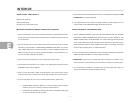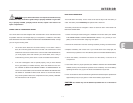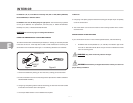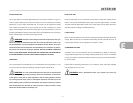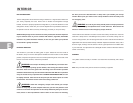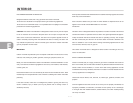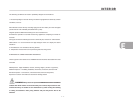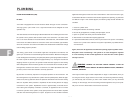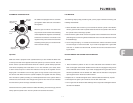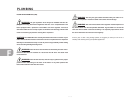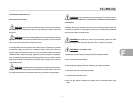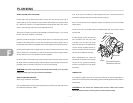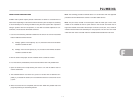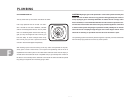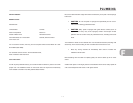
F
PLUMBING
F - 1
LIQUID PETROLEUM GAS (LPG)
Fill Valve
Your trailer is equipped with LP tank fill valves called “RV Type I Acme” connection.
The large, green, nylon swivel nut is a right hand thread and is designed for hand
operation only.
The valve features an internal spring-loaded module that will not allow gas to flow from
the cylinder until a positive seal has been made at the connection. The valve outlet
has 1-5/16” Acme threads on the outlet exterior and female POL, left-handed threads
on its interior. This feature allows for connection of the new wrenchless, right-handed,
Acme RV connection and still accommodates the standard left-handed POL fittings
used for filling propane cylinders.
The mating, green swivel nut and brass nipple also incorporates new features: the
green nylon nut swivels on a black bushing that is heat sensitive. Between 240 degrees
F and 300 degrees F the bushing will yield (melt) allowing the spring-loaded module in
the valve to push the brass nipple back (approximately 1/4”) closing the module and
stopping the flow of gas from the cylinder. Inside the brass nipple is a flow-limiting
device designed to sense excessive gas flow. If an excessive flow is sensed, the flow-
limiting device shuts the flow down to a maximum of 10 SCFH (Standard Cubic Feet
per Hour) or less. This is also referred to as the by-pass flow.
By-pass flow is extremely important in the proper operation of this connection. The
flow-limiting device may activate if the cylinder valve is opened quickly. When all appli-
ances are off, the by-pass flow allows the pressure downstream from the flow-limiting
device to equalize. When pressure is equalized, the flow-limiting device will supply
normal flow to the system. Equalization occurs in approximately 5 seconds and in
most cases goes completely unnoticed. If, however, an appliance is left on or there
is a leak or open flow in the system, the by-pass pressure will not be able to equalize
and allow the flow-limiting device to re-open. Symptoms of this condition would be
appliances that light but have lower than normal flame or starve out from lack of gas,
a substantial reduction in the flame when another appliance is operating, or pilots that
are difficult to light. If this should happen, the following steps should eliminate the
condition:
1. Close LP cylinder valve.
2. Extinguish all flames and smoking materials
3. Be sure all gas appliances, including their pilot lights, are off.
4. Open LP cylinder valve slowly. DO NOT SNAP OPEN.
5. Wait at least 15 seconds before lighting appliances.
6. If operational difficulties continue, there may be a leak in the system. Immediately
close the LP cylinder valve and have the system inspected by a qualified RV ser-
vice technician.
Again, make sure all appliances are off before opening propane cylinder valves.
Exception: when reconnecting a full cylinder to an auto changeover regulator
it is not necessary to shut off the appliances or close the valve of the cylinder
already in service.
WARNING: LEAKING LP GAS MAY IGNITE CAUSING A FIRE OR
EXPLOSION WHICH COULD RESULT IN SERIOUS BODILY INJURY, PROPERTY
DAMAGE, OR DEATH.
How long a full tank of gas will last is dependent on usage. In cold weather, when you
are using the furnace, large amounts of hot water, and are doing extensive cooking,
you will naturally use more than you will in warm weather when you may do limited
cooking. On the average, with normal cooking and other appliance use you can prob-
ably count on two to three weeks of service from each tank.



